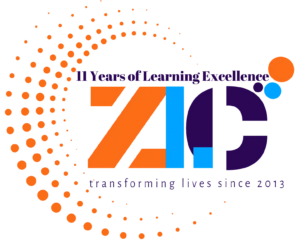“Knowledge itself is power” Sir Francis Bacon in Mediations Sacrae
An organization operates based on both individual and collective knowledge gaining as well as sharing. A highly motivated, talented, and enthusiastic workforce that is ever-ready to absorb more knowledge be it technical know-how or communication strategies, and apply it efficiently is the foundation on which an organization can build its future and stand out from the competition. Willingness to learn and share knowledge is fundamental to the growth of functional as well as core competencies of the employees.
To have that dynamic workforce, you always wanted and to avoid high attrition rates it is necessary to have a workforce who –
- Is receptive to new knowledge.
- Motivated to learn and update or upgrade their current level of skill
- Is willing to share knowledge with co-workers.
Organizational culture must be knowledge friendly if they want to have a workforce that is enthusiastic about learning and skill development. A knowledge-friendly workplace is essential to prevent attrition rates from hitting sky high and also enhance the productivity of your workforce.
What is a Knowledge-Friendly Organizational Culture?
A knowledge friendly workplace is one where:
- Learning is continuous and not just occasional. The management should ideally inspire the employees to learn, to update their skills throughout the year and not just after the yearly performance assessment. Every time a project is not to your liking it’s a time for a skills update. Each time an employee falters in that presentation or struggles with managing time there’s an immediate need for training.
- That encourages employees to share knowledge like technical know-how, industry trends, client knowledge, etc.
Why Are Some Employees Unwilling To Learn?
Various factors can inhibit employees to engage in active learning.
Generation Gap:
Some employees, particularly senior employees are unwilling to engage in learning and upgrading their knowledge or skills. Long-time employees who have been accustomed to a particular way of running things or working, often find themselves unwilling to adapt to a new organizational culture that demands continuous updating of current knowledge or skills. This type of crisis usually occurs during employee redeployment where a senior employees might find themselves handling new responsibilities or a new mode of work such as remote projects.
Lack of Time:
Learning takes time. Absorbing new facts, processing them, and learning how to apply them in real-time, is an arduous process. As employees are not actively engaged in any office work during the training process, many times they are requested to take up training after work. This kind of puts the work-life balance up for a toss, as this involves the worker dedicating themselves to professional learning after office hours.
They may think learning is not relevant or applicable
If the course has too much content not pertaining to the employee’s immediate job role or responsibility or the employee doesn’t see how a particular course can lead to enhancing his/her core or functional skills they are not going to be very enthusiastic about training.
The Company Culture is not Learning Friendly
Some organizations tend not to prioritize learning. Learning & Development involve expenses. The management might not be willing to invest extra time or money in training and development.
How to Motivate Employees to Learn?
- Make them see how learning might benefit them. Employees, in general, want to excel at their job both for a personal sense of accomplishment and to improve their chances at a promotion or job security. Line managers should interact with the employees under them on a one-to-one basis and make them understand how enrolling in a specific course might make their jobs easier.
- Come up with Incentives. Financial incentives are a fail-proof way to galvanize employees. For example, you can make enthusiastic learning one of the factors necessary to be eligible for the promotion. Successful completion of courses might lead to career fast-tracking, leading to better roles, higher pay. This will automatically motivate at least some employees to take training more seriously.
- Make Training Process More engaging. For this you can:
- Introduce micro-learning sessions. This will break up the course into small, precise, and comprehensive portions that the employees can absorb easily.
- Arrange for mobile-friendly content. Most people spend their off-time browsing the mobile. The more mobile-friendly your content is, the easier it becomes to learn.
- Make Training more entertaining through Gamification, live simulation, videos, etc.
- Personalize the training. If the employees can get training content that fits his/her learning ability, interests, learning style, etc. then they would be more invested in the L&D process. See if you can make at least some part of the training self-paced. If possible conduct polls from employees to see what they want in a course before hiring any corporate trainer/expert.
- Prioritize on Training. Make learning a part of your organizational culture. If possible you can let employees know that their performance in L&D courses, their enthusiasm, or zeal to learn will also be assessed in the monthly/yearly performance evaluation. Encourage a growth mindset in your workforce at all levels. Encourage them to think about how they can rise above their current role or responsibilities and reach for the stars!
How to Encourage Knowledge Sharing?
Did you know that not sharing knowledge has cost many Fortune 500 companies have cost them a grand $31.5 billion a year?
Yes, that’s the cost of not having a culture that encourages continuous learning and sharing of knowledge among the employees!
Knowledge sharing undoubtedly leads to more efficiency, more creativity – more good things in general. However, unsurprisingly many employees are not that keen on sharing knowledge.
Many employees particularly those whose job is dependent on domain-based knowledge, be it technical know-how, in-depth insights on the industry, or a knack for client/customer satisfaction, jealously guard their knowledge and refuse to share it with co-workers.
Like the magician who keeps their tricks close to their heart, your in-house experts will very likely be less than eager to divulge their ‘trade secrets to colleagues. In many cases they may play dumb, pretend not to know or promise to share, to teach but not deliver on that promise.
What causes Knowledge Hoarding?
According to a study conducted by Harvard Business Review, the nature of a job can dictate whether the employees will be more open to sharing what they know. Following are the takeaways from this survey:
- Jobs that are more demanding in the cognitive sense that is involves processing a huge amount of knowledge to get things done often results in more voluntary knowledge sharing.
- Jobs that rely on teamwork. If a project cannot be completed without the team collaborating in tandem or employees from various departments cooperating and working together then certain interdependencies are inevitable. Workers who have to rely on each other’s knowledge to get the job done will be more open to sharing know-how.
- In general, if the employees are provided with more autonomy or creative liberty then they feel more enthusiastic about sharing what they know with co-workers. They won’t feel that they would lose any competitive advantage by sharing knowledge in that case. Most people want to talk about what they love or are great at with others.
How to Encourage Employees to Share Knowledge?
It’s not easy to convince people to part with their hard-earned knowledge particularly if they think they might lose competitive advantage. However, with the right amount of motivation, the management can encourage employees to be more open to sharing what they know.
Make Teamwork a cornerstone of your Organizational Culture
If organizational culture does not encourage teamwork and collaboration then employees will tend to think ‘’every man for himself” and will refuse to share knowledge. If possible involve employees under group projects where information sharing is mandatory to get the job done. When brainstorming for projects ask for inputs from everyone.
Cultivate the mindset of working as a team from the very beginning.
Keep Doors Open
Do your employees feel free to approach people for help at work? If the employees think they might be judged if they admit to not knowing something or asking for help, a genuine knowledge-sharing mindset will never thrive.
Don’t shame or penalize people for not knowing something. If employees feel they might face discrimination for not being up-to-date with everything from the get-go, they will feel more hesitant to give and take knowledge freely.
Reward Knowledge Sharing
Sharing knowledge doesn’t come naturally to everybody so motivate people by rewarding those who readily help others so that it sets an example that others can emulate. Rewards can come in form of public acknowledgement or more tangible forms such as discount vouchers, a meal with management, coffee shop gift cards, etc.
Maintain a Knowledge Sharing Platform
To ensure that no unscrupulous hoarding of knowledge occurs ensure that employees have access to company resources be it important contacts or files easily. Install a cloud-based knowledge sharing platform or collaborative tools such as SharePoint and store all vital information there so that no time is wasted looking for information. Moreover, make it a company policy that any document used by more than one person should be put in shared files rather than in a specific employee’s computer’s hard drive.
Build Up a Culture of Mentorship
Every new hire needs somebody they can go to when they are feeling uncertain about something or in need of help, without any hesitation. However, be careful when assigning mentors. Direct supervisors or line managers may not be the correct person as a mentor as there is always a fear of judgment in a new employee’s mind when it comes to asking supervisors for assistance. A senior employee who does not supervise the new hire but has good knowledge in the domain where he/she is working will be a better choice.
Identify the Experts
Utilize all your knowledge mapping tools to find out the knowledge experts – the programming wizard, the wordsmith, the designing genius and give them a platform to express their ideas freely. Let them know you value their inputs in public. They will feel appreciated and the other employees will also benefit from their insights.

